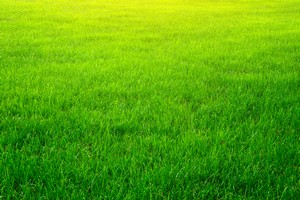Complementing Your Smart Irrigation System with Sustainable Solutions
You’ve hired a certified landscape irrigation auditor to conduct a site inspection and irrigation system audit. You’ve discussed the findings, identified opportunities for potential water savings, and completed the appropriate system enhancements, repairs and upgrades with new water-saving technologies based on the system evaluation.
Your Howell irrigation system is outfitted with check valves, water-efficient rotating sprinklers or low-volume drip irrigation, a smart controller or soil moisture sensor, and a rain sensor. You’ve implemented a regular system maintenance strategy to ensure proper adjustments, run times and seasonal changes take place. You’re all set – with a top of the line, truly “smart” irrigation system that is running at peak efficiency, saving water and money on your water bill. Now what?
There are plenty of additional considerations you can explore to complement your smart irrigation system and contribute toward a truly sustainable landscape.
Permeable pavers. An alternative to concrete or asphalt surfaces, permeable pavers allow rainwater to filter naturally down into the underlying soil to recharge valuable groundwater aquifers. They help prevent flooding and protect the quality of our water supplies by eliminating pollutant-laden runoff from entering natural waterways.
Rainwater harvesting. Rainwater harvesting refers to the capture and storage of water, which can then be used as a supplemental water source for irrigating a landscape. Rainwater harvesting can take many forms, including above-ground rain barrels or cisterns, below-grade catchments or combined systems that incorporate simple or advanced water features. Be sure to check local regulations before exploring this option.
LED lighting. LED technology, or light emitting diode, is the most efficient light source available, rivaling halogen in brilliance and intensity at one-fifth of the wattage. Though not suitable for all applications, the lamp life rating is excellent – upwards of 80,000 hours.
Green walls. A vertical, vegetative “living wall,” a green wall can be freestanding or part of a building and can help reduce the overall temperature of the building, improve the aesthetics and can even aid in water reuse, purification and retention.
Soil testing. Submit a soil sample to a testing laboratory for an inexpensive report explaining its balance of nutrients, which will assist with selecting the appropriate fertilizer and application rate.
Aerification, amendments and mulch. Implementing a regular aerification schedule and base layer of organic matter or calcined clay products will aid in water and nutrient retention and allow deeper infiltration into the soil profile to promote deeper root growth and help plants resist disease and better withstand drought conditions.
Slow-release fertilizer. The use of coated, slow-release fertilizers, which have lower salt indexes than other quickly-available nitrogen fertilizers, means less watering when compared to their non-coated counterpart products.
Fertilizer injection systems (fertigation). Fertigation, derived from the combination of fertilization and irrigation, allows you to fertilize and irrigate a section of turf in one simple step, making it easier for nutrients to infiltrate plant root zones and eliminating the need for watering above and beyond the irrigation system’s scheduled program run time.












